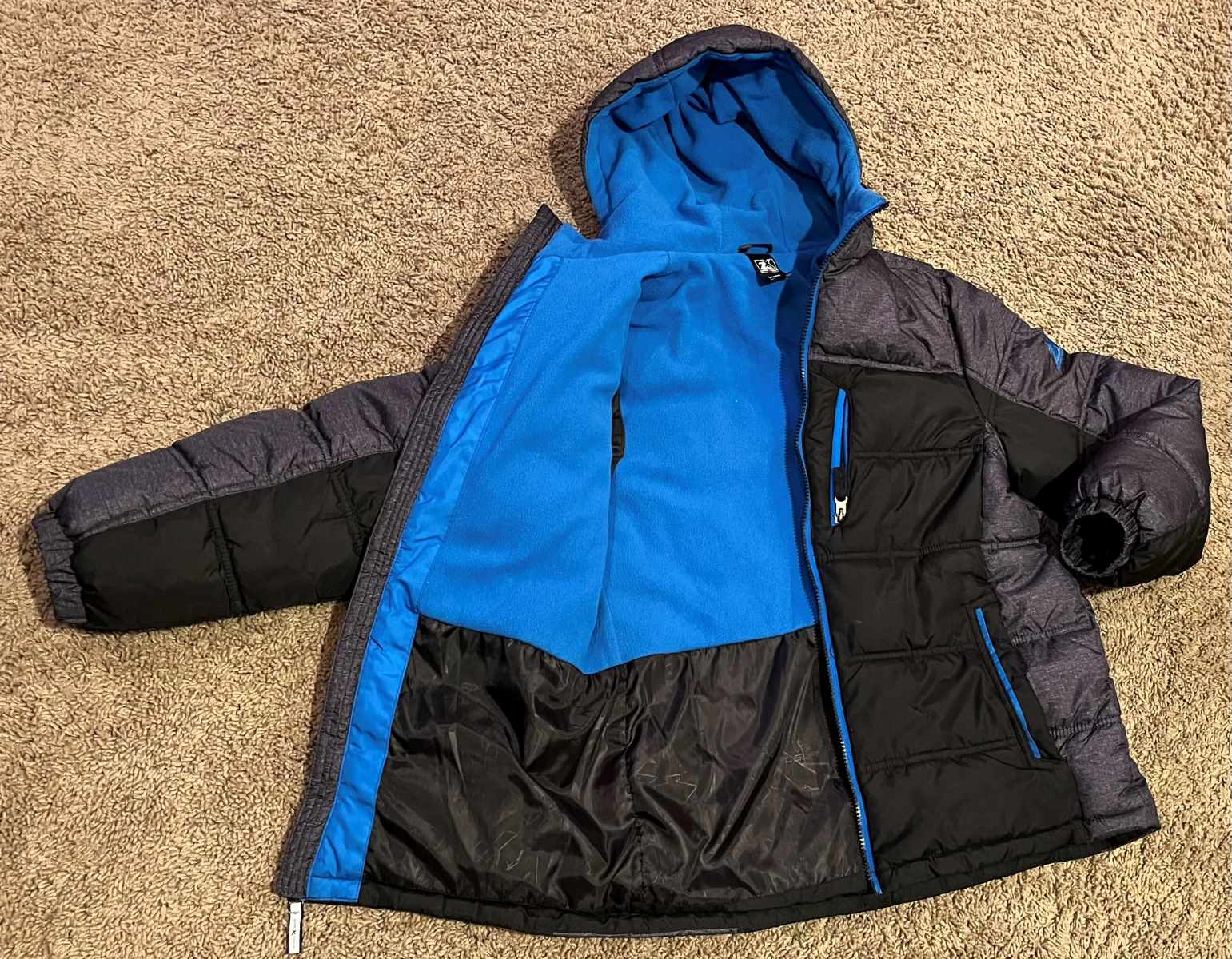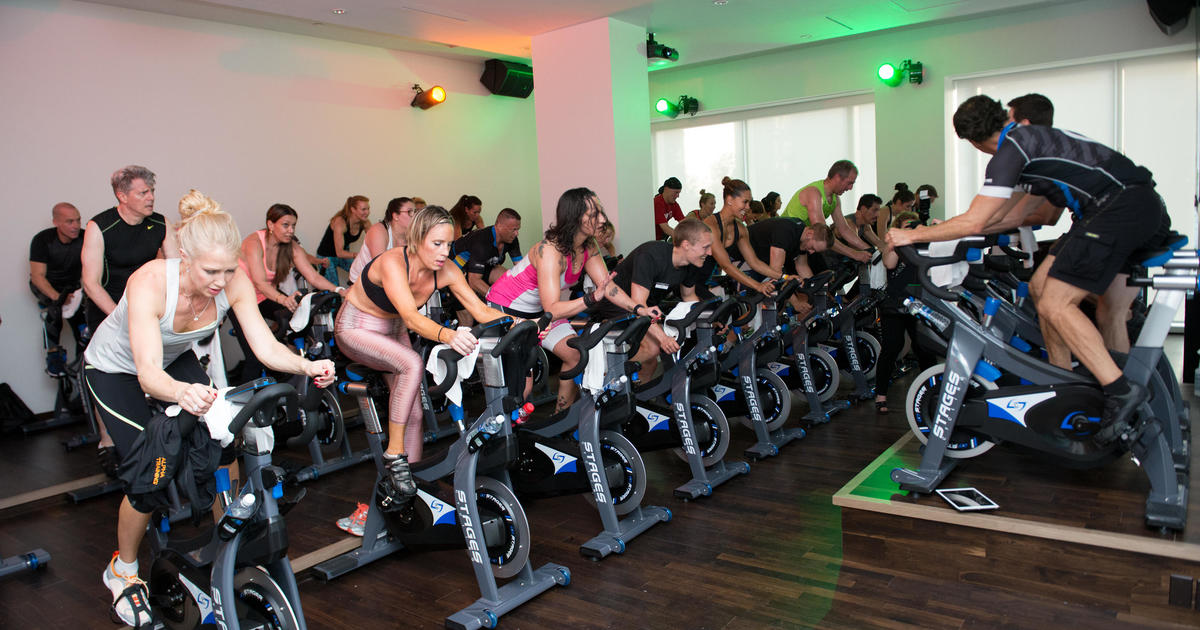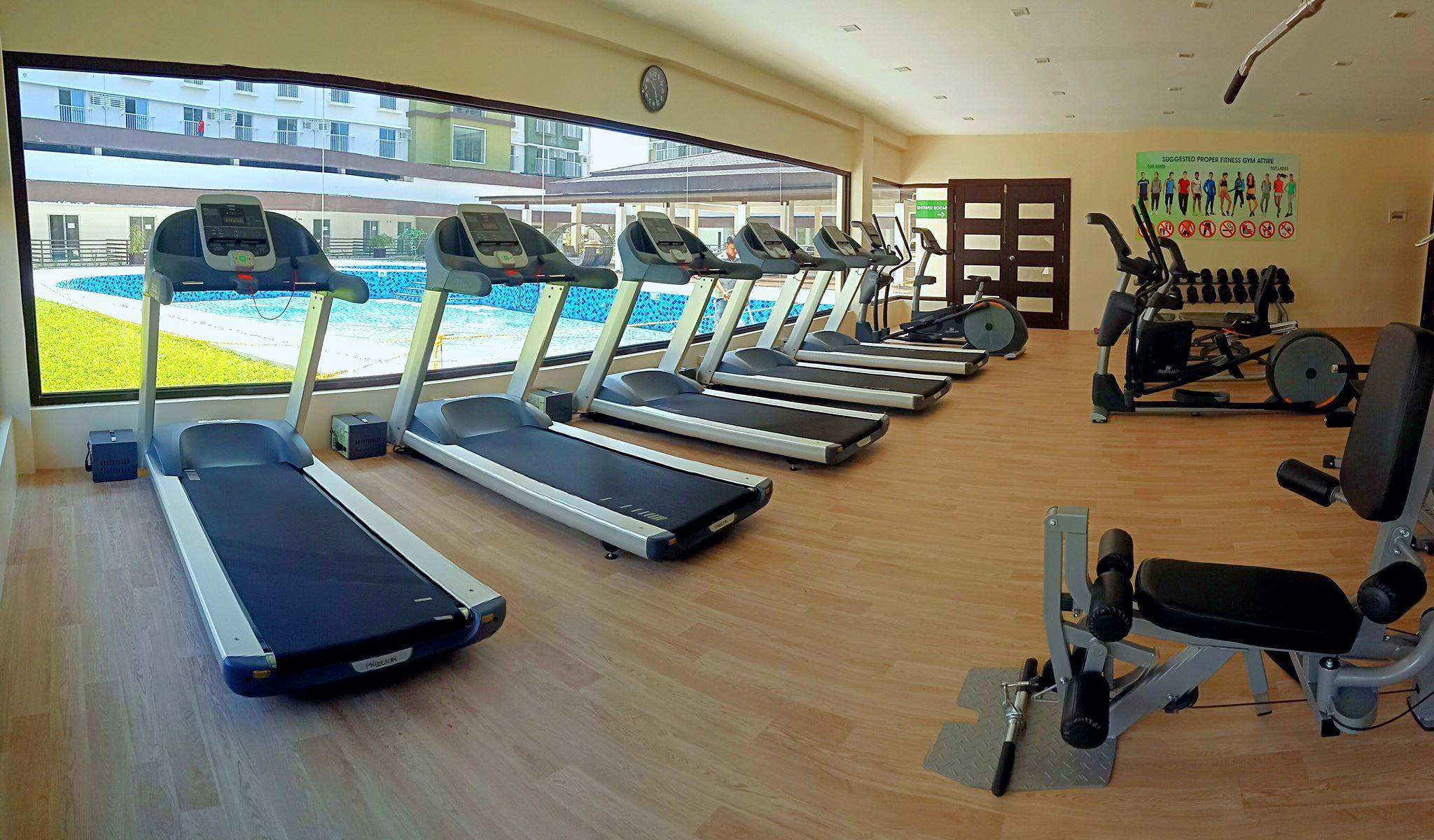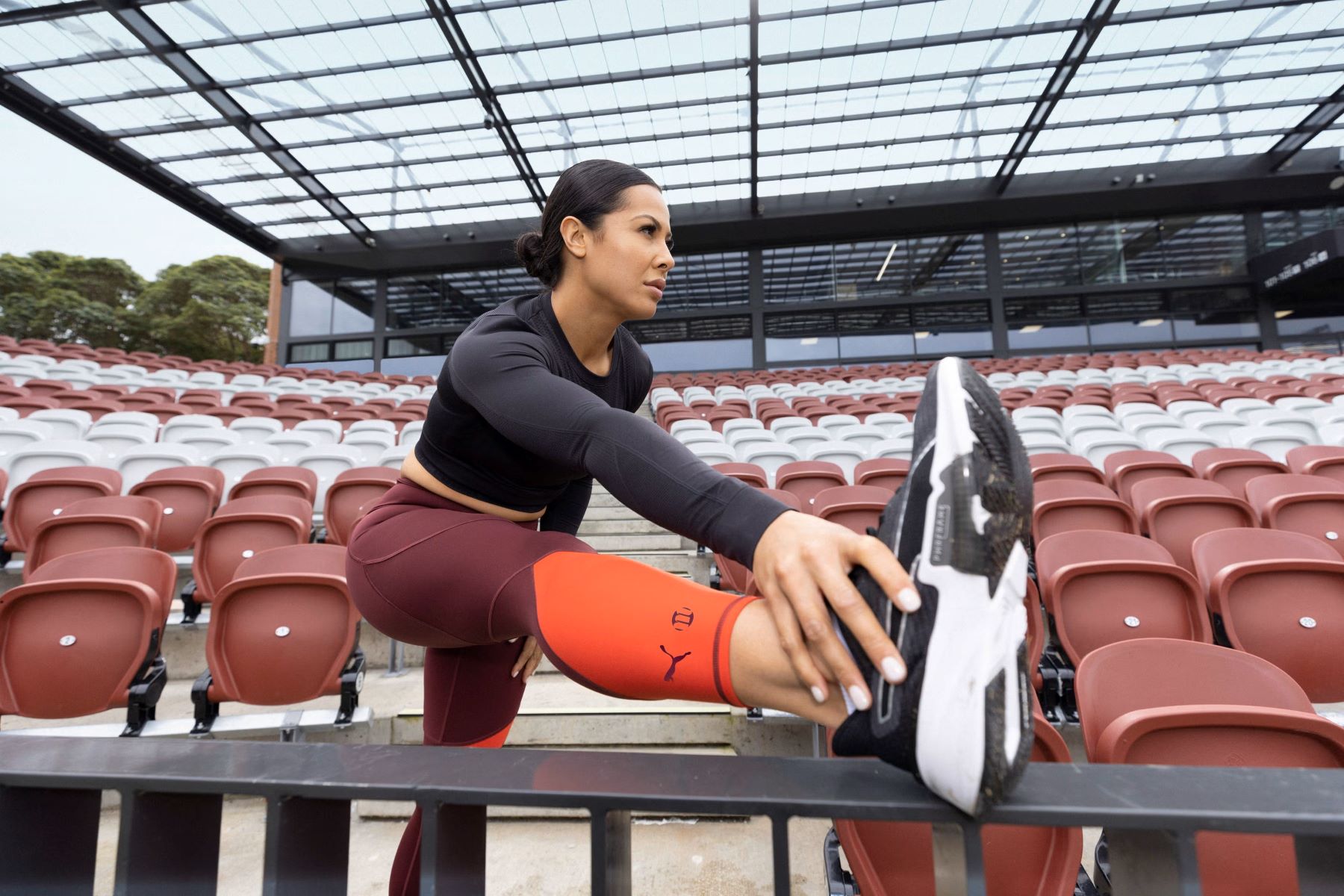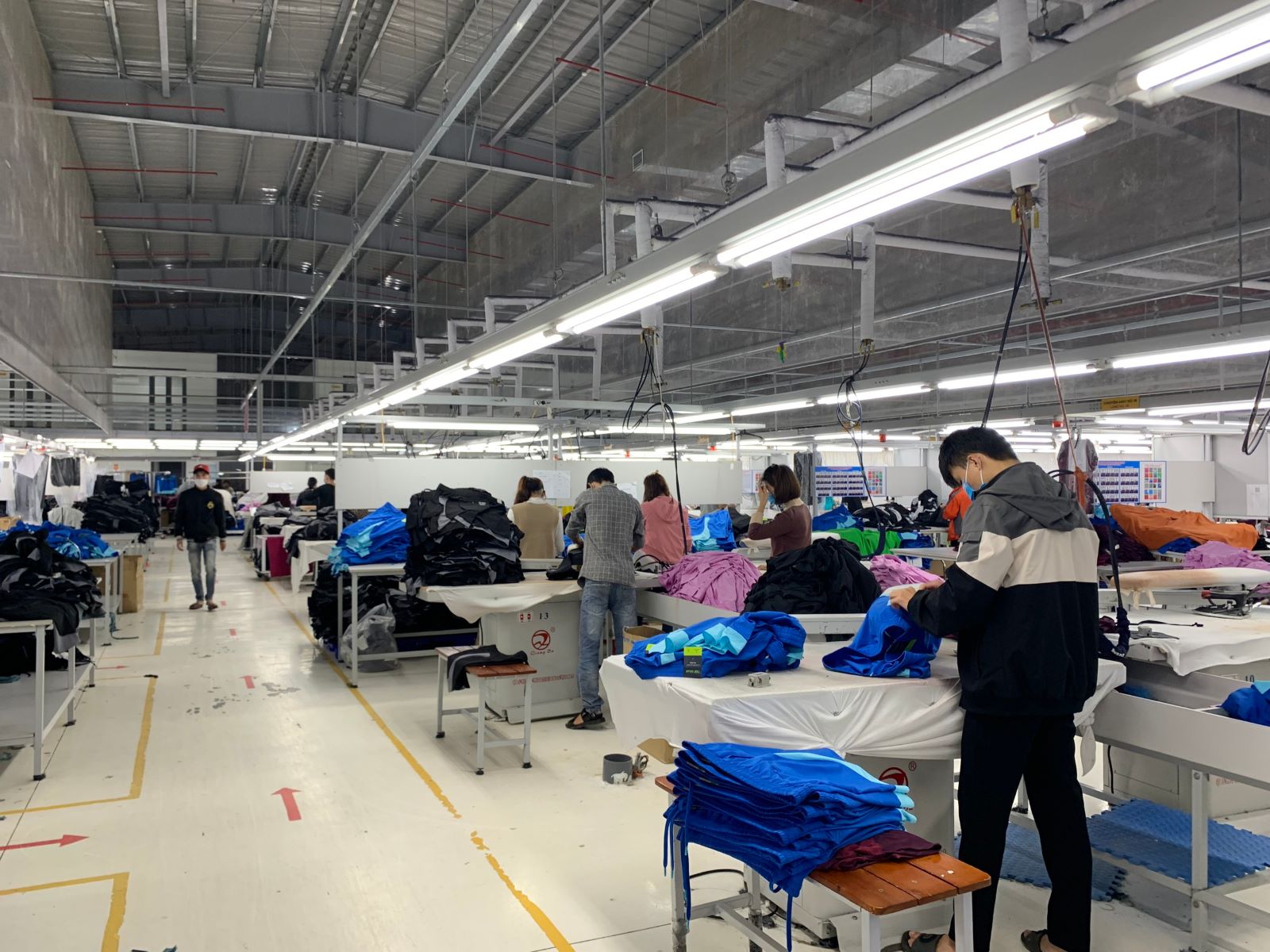

Featured
How To Start An Activewear Company
Modified: August 19, 2023
Learn how to start your own activewear company with our featured guide. From sourcing materials to marketing strategies, we've got you covered!
Introduction
Welcome to the world of activewear! If you’ve ever dreamt of starting your own activewear company, now is the perfect time to turn that dream into a reality. The activewear industry has experienced tremendous growth in recent years, driven by an increased focus on health and fitness and a growing demand for stylish and functional workout attire.
Before you embark on this exciting journey, it’s important to understand that starting an activewear company requires careful planning, strategic decision-making, and a deep understanding of your target market. This article will guide you through the step-by-step process of how to start your own activewear company, from conducting market research to building an online presence and launching successful marketing campaigns.
Starting any business requires dedication, perseverance, and a genuine passion for your product. Activewear is no exception. The market is highly competitive, with established brands dominating the scene. However, with careful planning, a unique brand proposition, and a clear understanding of your target customer, you can carve out your own niche in this thriving industry.
In the following sections, we will explore each step in detail, providing you with valuable insights and practical tips to help you navigate the challenges of starting an activewear company. So, let’s dive in and explore the world of activewear entrepreneurship!
Step 1: Research and Market Analysis
In order to build a successful activewear company, you first need to conduct thorough research and analysis of the market. This step is crucial as it will help you identify key trends, understand your target customers, and discover any gaps or opportunities in the market.
Start by researching the activewear industry as a whole. Look at the current market size, growth projections, and major players in the industry. Analyze their product offerings, pricing strategies, and marketing approaches. This will give you a better understanding of the competitive landscape and help you differentiate your brand.
Next, identify your target customer. Determine their demographic profile, lifestyle, and preferences. Are they fitness enthusiasts, yoga practitioners, or casual gym-goers? Understanding their needs and preferences will allow you to design and market products that resonate with them.
Conducting a SWOT analysis (Strengths, Weaknesses, Opportunities, Threats) is also beneficial at this stage. Assess your own strengths and weaknesses as well as potential opportunities and threats in the market. This will help you identify areas where you can differentiate your brand and capitalize on untapped market segments.
Furthermore, don’t forget to analyze the current fashion and fitness trends. What are the popular colors, patterns, and styles in activewear? Stay updated on the latest innovations in fabric technology and sustainability practices. This will give you an edge when it comes to product development and positioning.
Lastly, seek feedback from your potential customers. Conduct surveys, interviews, or focus groups to gather their insights and opinions. This feedback will provide valuable information to fine-tune your product offerings and ensure they meet the needs and expectations of your target audience.
By thoroughly researching and analyzing the market, you will gain a deep understanding of your target customers, competition, and industry trends. This knowledge will be invaluable as you move forward with the next steps of starting your activewear company.
Step 2: Define Your Brand and Target Customer
In order to stand out in the crowded activewear market, it is crucial to define a strong brand identity and identify your target customer. This step will help you differentiate your company and create a meaningful connection with your audience.
Start by defining your brand values, mission, and vision. What do you want your activewear company to represent? Are you focused on sustainability, performance, or style? Clearly articulating your brand identity will guide your business decisions and help you create a cohesive brand experience.
Next, identify your target customer. Understand their needs, aspirations, and pain points. By developing a clear picture of your target audience, you can tailor your products, messaging, and marketing strategies to resonate with them.
Consider demographics such as age, gender, location, and lifestyle. Dive deeper into psychographics, understanding their values, interests, and motivations. This will allow you to create a brand that aligns with their preferences and builds trust and loyalty.
Additionally, conducting competitor analysis at this stage is crucial. Study how other activewear brands are positioning themselves and identify any gaps in the market. By understanding what your competitors are offering, you can position your brand in a unique way that caters to the needs of your target customer.
Once you have defined your brand and target customer, it’s time to develop your brand identity, including a strong logo, brand colors, typography, and visual elements. These elements will serve as the foundation for your brand’s visual identity and should be consistent across all your marketing channels.
Remember, a well-defined brand and target customer will shape all aspects of your activewear company, from product development to marketing. Building a brand that resonates with your target audience will set you apart from the competition and create a connection that goes beyond just selling activewear.
Step 3: Create a Business Plan
A well-crafted business plan serves as a roadmap for your activewear company, outlining your goals, strategies, and financial projections. It helps you define your business objectives and lays out the necessary steps to achieve them.
Start by outlining your business concept. Define your unique selling proposition (USP) and clearly articulate what sets your activewear brand apart from others in the market. Identify your target market segments and outline how you plan to capture their attention and meet their needs.
In your business plan, include a detailed market analysis. Evaluate the size and growth potential of the activewear industry. Identify trends, market opportunities, and potential challenges. This will help you position your brand effectively and make informed decisions.
Next, clearly define your product offering. Describe the types of activewear you plan to offer, the materials you will use, and any innovative features. Outline how you plan to differentiate your products from competitors and create a unique value proposition.
Develop a comprehensive marketing strategy as part of your business plan. Outline your digital marketing activities, such as social media campaigns, influencer collaborations, and content marketing. Also, include traditional marketing methods such as advertising, PR, and events. A detailed marketing plan will guide your promotional efforts and help you reach your target audience effectively.
Financial planning is a crucial aspect of your business plan. Outline your startup costs, including product development, manufacturing, marketing, and website development. Project your revenue and expenses for the first few years, considering factors like production costs, pricing, and sales volume. Determine how you will fund your startup and outline your financial projections for profitability and growth.
Lastly, include an executive summary at the beginning of your business plan. This section provides an overview of your business idea, objectives, and strategies. It should capture the attention of potential investors or partners and convey the essence of your activewear company.
A well-crafted business plan not only serves as a guide for your activewear company’s growth but also demonstrates your professionalism and commitment to potential investors or lenders. Take the time to develop a comprehensive and persuasive business plan that reflects your vision and sets a solid foundation for your venture.
Step 4: Source Suppliers and Manufacturers
Once you have a clear vision for your activewear brand and a solid business plan, the next step is to source suppliers and manufacturers for your products. Finding reliable and high-quality suppliers is crucial to ensuring the success of your activewear company.
Start by conducting thorough research to identify potential suppliers and manufacturers who specialize in activewear production. Look for suppliers who align with your brand values, environmental sustainability practices, and production capabilities.
Make a list of potential suppliers and reach out to them to inquire about their services, production capacity, lead times, and pricing. Request samples of their work to assess the quality of their products. A successful partnership with suppliers who can meet your production needs and deliver products on time is essential for the smooth operation of your business.
When evaluating suppliers, consider factors such as their reliability, reputation, and ability to accommodate your specific requirements. It’s also important to establish clear communication channels and ensure that they are responsive and willing to work closely with you throughout the production process.
Once you have identified potential suppliers, it’s a good practice to visit their facilities if possible. This will give you firsthand insight into their production processes, quality control measures, and working conditions. It will also help you establish a personal connection and build trust with your suppliers.
When negotiating contracts with suppliers, ensure that all terms and conditions are clearly outlined, including pricing, payment terms, delivery schedules, and quality control standards. It’s essential to have a solid understanding of the production timeline and ensure that your suppliers can meet your demand for product quantity and quality.
Additionally, consider diversifying your supplier base to mitigate risks and avoid dependency on a single source. Having multiple suppliers can provide flexibility, ensure a consistent supply of products, and help you negotiate better pricing and terms.
Remember, sourcing suppliers and manufacturers is a critical step in the journey of starting your activewear company. Taking the time to find reliable partners who align with your brand values will ensure the production of high-quality activewear that meets the expectations of your target customers.
Step 5: Design and Develop Your Activewear Products
The design and development of your activewear products are crucial steps in creating a unique and appealing brand. This is where you bring your vision to life and turn your ideas into tangible products that meet the needs and preferences of your target customers.
Start by researching current trends in activewear design. Look at popular styles, colors, and patterns that resonate with your target audience. This will help you stay relevant and create products that are in demand.
Next, develop a cohesive and versatile product line that caters to the different needs of your target customers. Consider offering a variety of styles, such as leggings, sports bras, shorts, and tops, to provide options for different activities and body types.
When it comes to materials, prioritize comfort, performance, and durability. Choose fabrics that are moisture-wicking, breathable, and stretchable to ensure optimal performance during workouts. Also, consider incorporating sustainable materials and practices to align with the growing demand for eco-friendly activewear.
Work closely with your suppliers and manufacturers to create prototypes and samples of your activewear products. Test the samples thoroughly, evaluating the fit, comfort, and functionality. Seek feedback from potential customers or fitness enthusiasts to gather insights and make any necessary improvements.
Think about incorporating unique design elements and details that set your activewear apart from competitors. This could include innovative features, stylish patterns, or eye-catching branding. Consider both aesthetics and functionality to create a product that customers will love.
Ensure that your product development process is aligned with your target customers’ preferences. Conduct market research, engage with your audience on social media, and use customer feedback to continuously iterate and refine your designs.
Don’t forget about sizing options. Offering a range of sizes, including plus sizes, will help you cater to a broader customer base and make your brand more inclusive.
Once you have finalized your designs, work closely with your suppliers and manufacturers to begin production. Maintain open and frequent communication to ensure that the production process runs smoothly and that the end products meet your quality standards.
Remember, the design and development of your activewear products are instrumental in setting your brand apart from competitors. By creating products that are not only stylish but also functional and of high quality, you will establish a loyal customer base and pave the way for the success of your activewear company.
Step 6: Build an E-commerce Website and Online Presence
In today’s digital age, having a strong online presence is essential for the success of your activewear company. Building an e-commerce website and effectively establishing your brand online will allow you to reach a wider audience and drive sales. Here’s how you can do it:
First, invest in a well-designed and user-friendly e-commerce website. This is your virtual storefront and should reflect the essence of your brand. Optimize your website for easy navigation, fast loading times, and a seamless checkout process. Ensure that it is optimized for mobile devices, as more and more customers are shopping on their smartphones.
Create compelling product descriptions and high-quality images that showcase your activewear in the best light. Utilize professional photography or consider hiring fitness models to showcase your products in action. This will help customers visualize themselves wearing your activewear and increase their likelihood of making a purchase.
Implement secure payment gateways to provide a safe and convenient shopping experience for your customers. Offer multiple payment options to cater to different preferences.
Additionally, incorporate social proof on your website by showcasing customer reviews and testimonials. This will build trust and credibility and encourage potential customers to make a purchase.
Next, establish a strong presence on social media platforms. Identify the platforms where your target audience is most active and create engaging content that aligns with your brand values. Utilize a mix of product photos, lifestyle shots, fitness tips, and inspirational content to captivate your audience.
Engage with your audience by responding to comments and messages promptly. Encourage user-generated content by running contests or featuring customers who post about your activewear. This will foster a sense of community around your brand and help increase brand awareness.
Invest in digital marketing strategies such as search engine optimization (SEO), pay-per-click (PPC) advertising, and social media advertising to drive traffic to your website. Implementing these strategies will help your activewear company get discovered by potential customers and increase your online visibility.
Collaborate with fitness influencers or partner with fitness studios and gyms to expand your reach and tap into their established communities. This will help you gain credibility and reach a targeted audience that aligns with your brand values.
Finally, monitor and analyze your online presence using analytics tools. Track website traffic, conversions, and engagement metrics to gain insights into your customers’ behavior and preferences. Use this data to optimize your online strategies and make informed business decisions.
By building an e-commerce website and establishing a strong online presence, you can reach a wider audience, build brand awareness, and drive sales for your activewear company. A well-executed online strategy is key to staying competitive in the fast-paced digital landscape.
Step 7: Set Up Inventory and Fulfillment Systems
Setting up efficient inventory and fulfillment systems is essential to ensure smooth operations and timely delivery of your activewear products. Proper management of inventory and fulfillment will help you meet customer expectations and maintain a positive reputation for your brand. Here’s how you can do it:
Start by assessing your inventory needs based on your sales forecasts and production lead times. Determine the optimal inventory levels to have on hand to meet customer demand without incurring unnecessary costs or holding excess stock.
Invest in inventory management software that can help you track your inventory levels, monitor sales, and automate reordering when necessary. This will streamline your inventory management process and ensure that you always have the right products in stock at the right time.
Implement a robust quality control system to ensure the consistency and reliability of your products. Conduct regular inspections of incoming inventory to identify any defects or issues before they are shipped to customers.
When it comes to fulfillment, consider whether you want to handle it in-house or outsource to a third-party fulfillment center. Each option has its pros and cons, so carefully evaluate which one aligns with your business goals and resources.
If you decide to handle fulfillment internally, set up an organized and efficient system to process orders, pack products securely, and ship them in a timely manner. Consider investing in shipping software that integrates with your e-commerce platform to streamline the fulfillment process and provide your customers with real-time tracking information.
If you choose to outsource fulfillment, research and select a reliable fulfillment center that can handle your inventory storage, order processing, and shipping. Ensure that they have experience in handling activewear products and can meet your specific requirements for packaging and shipping deadlines.
Establish clear communication channels with your fulfillment center or internal fulfillment team to optimize efficiency and address any issues that may arise. Regularly monitor and measure fulfillment performance to ensure that orders are being processed accurately and in a timely manner.
Implement a returns and exchanges policy that is customer-friendly and aligns with industry standards. Have a clear process in place for handling returns, and ensure that technology systems support the tracking and management of returned items.
By setting up efficient inventory and fulfillment systems, you can streamline your operations and ensure a seamless customer experience. This will help you build trust and loyalty among your customers and maintain a positive reputation for your activewear company.
Step 8: Launch Marketing and Advertising Campaigns
Launching effective marketing and advertising campaigns is essential to generate awareness, drive traffic to your website, and ultimately, increase sales for your activewear company. Here are some key steps to successfully launch your marketing and advertising campaigns:
Start by developing a comprehensive marketing strategy that aligns with your brand and target audience. Identify the most effective channels to reach your audience, such as social media platforms, search engines, or influencer partnerships.
Create compelling and engaging content that showcases your activewear products and resonates with your target customers. Use high-quality visuals, such as lifestyle images and videos, to capture attention and evoke an emotional connection with your audience.
Utilize social media marketing to reach and engage with your target audience. Develop a content calendar that includes a mix of product highlights, fitness tips, inspirational quotes, and behind-the-scenes content. Engage with your followers through comments and direct messages to build a loyal community around your brand.
Consider collaborating with fitness influencers who align with your brand values and have a strong presence in your target market. Influencer marketing can help you reach a wider audience and build credibility for your activewear products.
Utilize search engine optimization (SEO) strategies to improve the visibility of your website in search engine results. Conduct keyword research and optimize your website content, meta tags, and product descriptions. This will help you attract organic traffic and increase your chances of converting visitors into customers.
Implement pay-per-click (PPC) advertising campaigns, such as Google Ads or social media ads, to drive targeted traffic to your website. Set clear objectives, such as increasing brand awareness or driving sales, and carefully monitor your campaign performance to optimize your ad spend and maximize ROI.
Take advantage of email marketing to nurture relationships with your customers and drive repeat sales. Collect email addresses through your website and offer incentives, such as a discount or exclusive content, in exchange for sign-ups. Regularly send out engaging newsletters or promotional emails to keep your audience informed and encourage them to make a purchase.
Consider hosting or sponsoring events, such as fitness challenges or local fitness classes, to raise awareness and engage with potential customers in person. This can help you build a strong brand presence within your local community.
Measure the performance of your marketing and advertising campaigns using analytics tools. Track key metrics such as website traffic, conversion rates, engagement, and sales to identify successful strategies and areas for improvement.
Remember, marketing and advertising are ongoing efforts. Continuously monitor and refine your campaigns based on customer feedback and market trends. Stay agile and adapt to changes in the industry to ensure your activewear company stays competitive.
Step 9: Establish Partnerships and Collaborations
Establishing partnerships and collaborations can greatly benefit your activewear company by expanding your reach, enhancing brand visibility, and generating new opportunities. Here are some key steps to consider when seeking partnerships and collaborations:
Identify potential partners who align with your brand values and target audience. Look for complementary businesses or individuals in the fitness, wellness, or lifestyle industries. This could include fitness influencers, fitness studios, gyms, nutritionists, or other activewear brands that offer complementary products.
Reach out to potential partners and propose mutually beneficial collaborations. Highlight how the partnership can provide value to both parties and their respective audiences. Be clear about your objectives and the specific benefits that the collaboration can bring.
Consider co-creating content or products with your partners. This could include joint social media campaigns, brand collaborations, or even limited-edition activewear collections. Collaborative efforts can expand your audience reach and create excitement around your brand.
Engage in influencer collaborations by partnering with fitness influencers who align with your brand values. Collaborate on content creation, product launches, or campaigns that feature your activewear. Influencer partnerships can help you tap into their loyal followers and gain traction in the market.
Explore opportunities for strategic sponsorships. This could include sponsoring fitness events, sports teams, or wellness programs. By associating your brand with these activities, you can increase brand awareness and reach a wider audience.
Consider creating affiliate programs to incentivize brand ambassadors or affiliates to promote your activewear products. Provide them with unique discount codes or a commission-based structure for driving sales. This can help amplify your brand message and drive additional sales.
Participate in trade shows, events, or conventions in the activewear industry. These provide opportunities to network with potential collaborators, meet industry professionals, and showcase your brand to a targeted audience.
Establish long-term partnerships by nurturing relationships with your collaborators. Engage in regular communication, provide support, and celebrate their successes. Building strong partnerships can lead to ongoing collaboration opportunities and mutual growth.
Before entering into partnerships or collaborations, ensure that you have clear agreements or contracts in place. Clearly define expectations, responsibilities, and the duration of the partnership to avoid any misunderstandings or conflicts down the line.
Remember, establishing partnerships and collaborations can open doors to new markets, elevate your brand image, and boost your activewear company’s growth. Be strategic in selecting partners and nurturing relationships to create mutually beneficial opportunities.
Step 10: Monitor and Adjust Your Business Strategy
Monitoring and adjusting your business strategy is crucial to the long-term success of your activewear company. As the industry and consumer preferences evolve, it’s important to stay agile and adapt to changes. Here are some key steps to effectively monitor and adjust your business strategy:
Continuously monitor your performance metrics to gauge the success of your activewear company. This includes tracking sales, customer acquisition costs, customer retention rates, and website analytics. Regularly review these metrics to identify trends, patterns, and areas for improvement.
Stay informed about industry trends and shifts in consumer behavior. Keep an eye on fashion and fitness publications, attend industry conferences, and engage with your target audience on social media. This will help you identify emerging trends and adjust your strategy accordingly.
Seek feedback from your customers through surveys, reviews, or direct communication. Listen to their input and suggestions and use this information to improve your products, customer experience, and overall brand strategy.
Monitor your competitors’ activities and performance. Stay up to date with their product launches, marketing strategies, and any industry innovations they introduce. This will help you identify areas where you can differentiate your brand and react to market changes.
Regularly evaluate your marketing and advertising campaigns. Review the performance of each channel, such as social media, PPC ads, or influencer partnerships. Analyze the return on investment (ROI) of each campaign and make adjustments accordingly to optimize your marketing spend.
Assess the effectiveness of your collaborations and partnerships. Monitor the reach, engagement, and sales generated from each partnership. Evaluate whether the collaboration met your objectives and consider exploring new opportunities or refining your partnerships.
Keep a close eye on your inventory and fulfillment systems. Regularly review your stock levels, production timelines, and fulfillment performance to ensure that you are meeting customer demand efficiently. Make adjustments as needed to avoid overstocking or running out of popular items.
Keep your business plan and financial projections up to date. Review them regularly to assess whether your assumptions and goals are still valid. Adjust your projections based on current market conditions, industry trends, and the performance of your activewear company.
Stay connected with your team and regularly communicate about the progress of your activewear company. Employee feedback and insights can be valuable for identifying areas that require adjustment and fostering a collaborative work environment.
Finally, be open to experimenting and trying new strategies. Don’t be afraid to make necessary adjustments to your product offerings, pricing, marketing, or distribution channels. Embrace a growth mindset and continuously fine-tune your business strategy to stay relevant and competitive.
By actively monitoring and adjusting your business strategy, you can ensure that your activewear company remains dynamic and responsive to market changes. Stay adaptable and willing to make calculated adjustments to position your brand for long-term success.
Conclusion
Congratulations on reaching the end of this comprehensive guide on how to start an activewear company! Throughout the steps outlined in this article, you have learned valuable insights and strategies to embark on your journey as an activewear entrepreneur.
Starting an activewear company requires careful planning, research, and strategic decision-making. From researching the market and defining your brand to sourcing suppliers, designing products, and establishing an online presence, each step plays a crucial role in your success.
Remember to continuously monitor and adjust your business strategy to stay ahead of industry trends and meet the evolving needs of your target customers. Flexibility, adaptability, and a commitment to delivering high-quality products and experiences will be key to sustaining and growing your activewear company.
Building a strong brand presence and implementing effective marketing and advertising campaigns will help you create awareness, engage with your audience, and drive sales. Seek partnerships and collaborations that align with your brand values to expand your reach and tap into new markets.
Finally, embrace feedback from your customers, employees, and industry peers. Learn from their insights and experiences to continuously improve your products and customer experience.
Starting an activewear company is an exciting and challenging endeavor, but with the right knowledge, strategies, and dedication, you can turn your vision into a thriving business. Stay focused, passionate, and adaptable as you navigate the ever-evolving landscape of the activewear industry.
Now it’s time to take what you’ve learned and embark on your journey as an activewear entrepreneur. With careful planning, perseverance, and a commitment to quality and customer satisfaction, you have the potential to make a meaningful impact in the activewear industry and inspire individuals to lead a healthy and active lifestyle.
